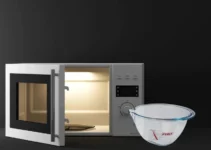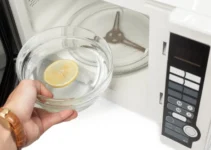A microwave is an excellent kitchen appliance that provides convenience and saves time in heating beverages and food. You may have seen containers or dishes with a microwave safe symbol on them and wondered what it means.
The microwave safe symbol is a standardized logo on a ceramic, glass, or plastic container that indicates if it is secure to heat in the microwave. The most common microwave safe labels are imprinted as curvy, wavy, or wiggly lines.
So, let’s discuss what is the microwave safe symbol in detail and which containers or dishes you can use in the microwave to ensure secure usage.
What is the microwave safe symbol?
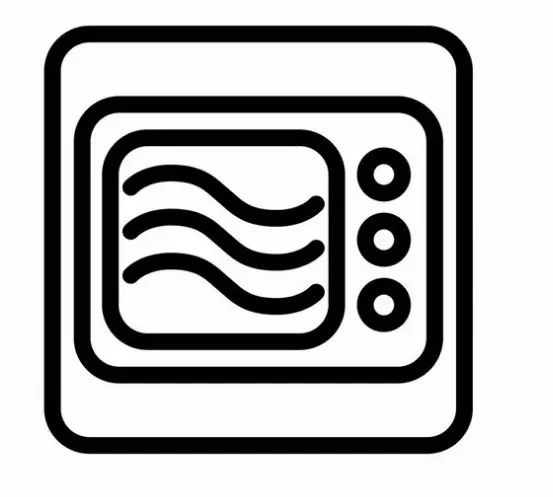
The microwave safe symbol is displayed on a container or a dish as curvy, wiggly, or wavy lines stacked together. You can usually find it on the inside or outside surface of the container or its packaging.
Microwave safe symbol refers to the material used in manufacturing a container or a dish, indicating that it will not get hot when exposed to extreme heat generated by the microwave. Instead, the content inside will absorb all the energy.
Which material is safe for microwaves?
Glass, ceramics, and reusable food containers with microwave-safe labels are the best material to heat items in your microwave. You can also microwave paper plates without plastic coating, parchment paper, and plastic wraps that are not directly touching the food.
On the flip side, it is unsafe to microwave wood, metal, or soft plastic material as it can damage your costly kitchen appliance and cause fire hazards.
However, there are a few exceptions. Some shiny aluminum metal sheets, such as aluminum foil, are safe to microwave. But ensure that the foil is new and smooth, not crumpled, and not touching the sides of the microwave.
How do I know if plastic is microwave safe?
Plastic containers are safe for microwaving, showing a microwave safe symbol or recycling numbers 2, 4, and 5 at the bottom. In contrast, avoiding plastic cutlery and utensils with 1, 3, 6, or 7 labels written on them is best.
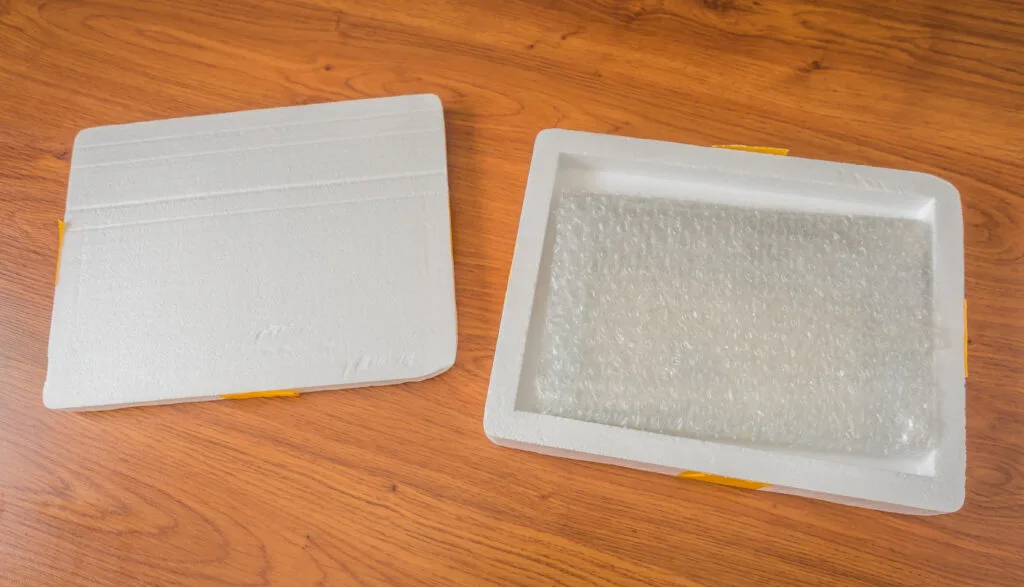
Sometimes, the microwave safe symbol is missing in plastic containers. However, the printed recycling numbers on them usually indicate what type of synthetic material is used in manufacturing for secure microwave usage.
However, you may not know what these numbers mean. So let’s discuss them briefly and find out why which ones you can microwave and not others.
Is plastic number 1 safe to use in a microwave?
Plastic #1, PET (Polyethylene Terephthalate), is commonly used to manufacture disposable water bottles, soda bottles, food containers, and other household items.
PET containers are disposable, so these are not suitable containers for heating food or drinks in the microwave.
Is type 2 plastic microwave safe?
Recycling #2 or HDPE (High-Density Polyethylene) is commonly used to make plastic milk jugs, juice bottles, and detergent containers. This number represents microwave safe, but you should check the label and follow the manufacturer’s instructions before putting these containers in your microwave.
Is the number 3 plastic microwave safe?
Polyvinyl Chloride (PVC), or recycling number #3, is unsafe for microwave use. PVC material contains additives such as phthalates and lead, which can leach out of the plastic and contaminate food when exposed to high temperatures, risking human health.
Is the number 4 plastic microwave safe?
Recycle plastic #4 is a Low-Density Polyethylene (LDPE) material, usually microwave-safe. LDPE has a relatively low melting point and is less likely to release harmful chemicals. However, if such plastics are exposed to high temperatures, they may melt or warp.
What is microwave safe symbol 5?
Symbol #5 indicates using Polypropylene (PP) in plastic manufacturing. PP can withstand heat up to 110 degrees Celsius, unlike other plastics, without melting or releasing harmful chemicals.
Another advantage of PP is that it is a relatively safe plastic because it does not contain harmful chemicals like BPA or phthalates.
What is microwave safe symbol 6?
Recycle number #6 refers to Polystyrene (PS) or Styrofoam, which is unsafe plastic for microwave use. The material can leach chemicals into your food on heating, increasing cancer risk.
What is microwave safe symbol 7?
Plastic number 7 releases bisphenol A (BPA) and other harmful chemicals into the food or beverage, making it unsafe to be used in the microwave.
The number 7 is a catch-all category that includes a wide range of plastic materials, some of which may be more difficult to recycle or not recyclable.
How to do a microwave safe test?
Performing a microwave-safe test can help you determine whether a container is safe to use in the microwave if clear labeling or a symbol is not visible on it.
First, set your microwave to the highest power settings. Next, fill a bowl with one cup of water, and place it along with the container you want to test in the microwave. Now, microwave the container and the bowl for a minute.
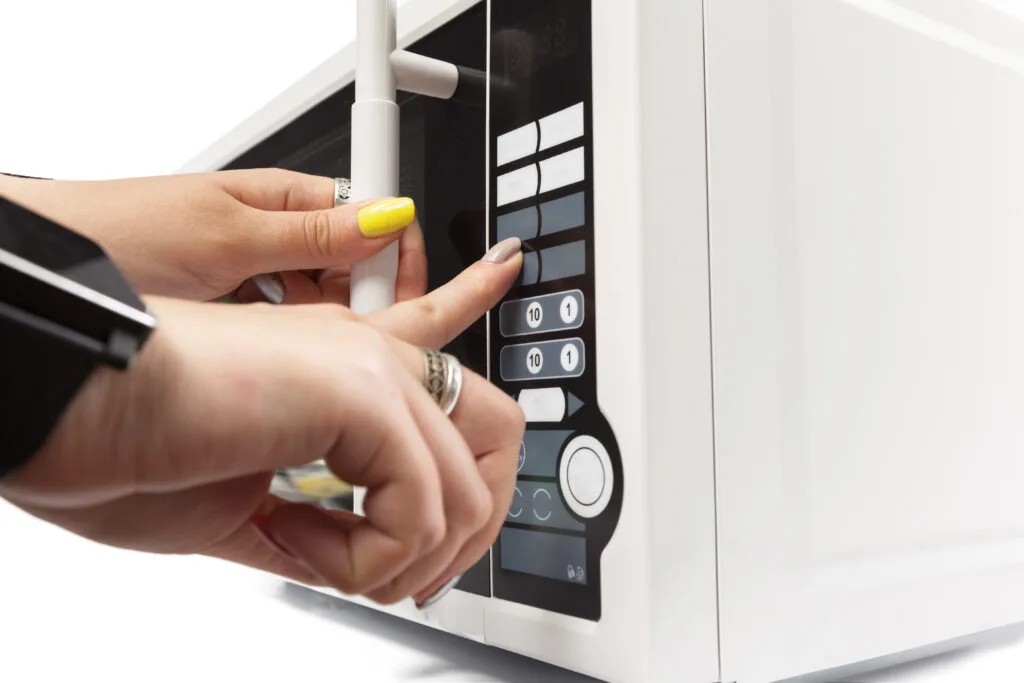
Take out both the bowl of water and the container. If the container is cold and the water is warm or hot, the container does not absorb much heat and is likely safe for microwave use.
However, if the container is warmer or hotter than the water bowl, using it in the microwave is unsafe.
What does microwave safe Reheat Only mean?
If a dish or container has a “microwave safe reheat only” label, it is safe to use in this appliance to warm up previously cooked food but not suitable for cooking raw food.
To avoid melting or damaging the container, reduce the microwave power or switch to reheat mode.
For example, Ziploc bags and Tupperware are often labeled as “reheat only,” meaning they are not designed to endure the high temperatures required for microwaving.
Conclusion
In this article, we’ve discussed what is microwave safe symbol on various glass, metal, and plastic containers and which materials are microwave friendly.
We hope this information helps you microwave your food in safe containers and enjoy leftovers without compromising the taste.


